Pumping iron is a great way to build muscle and stay in shape. But having too much iron flowing through your body doesn’t offer the same benefits.
Getting the right amount of this essential metal in your body is important. But too much (or too little) iron can be dangerous.
So let’s take an in-depth look at iron. Why do you need it? And how much do you need?
What’s the truth about animal-based and plant-based iron? And how can you consume iron-rich foods to get the right amount your body needs?
What Is Iron? And Why Is It Important?
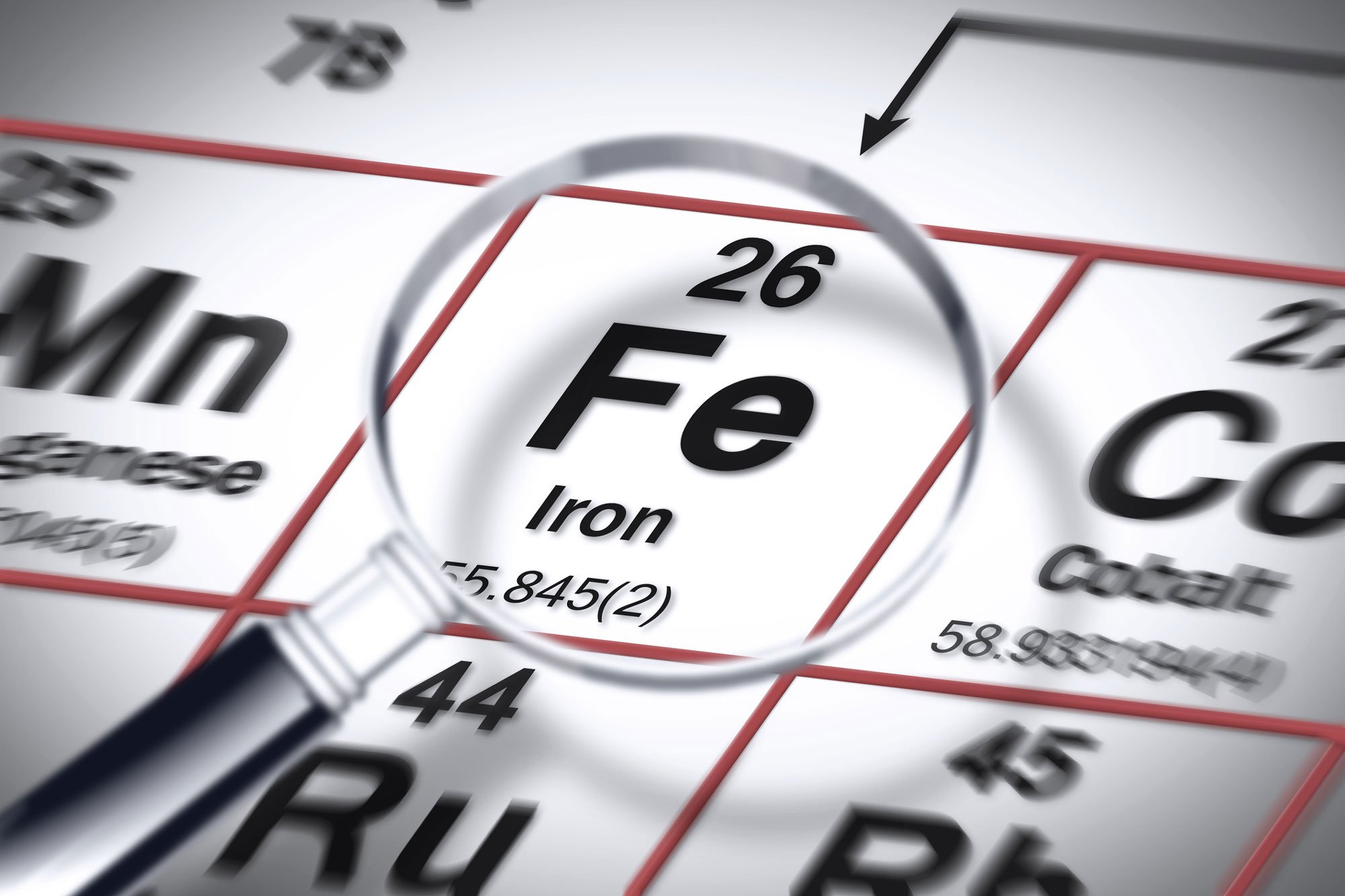
Iron is a critical nutrient for all living things.
Your body uses it as a building block for a protein in your blood called hemoglobin.
Hemoglobin transports oxygen through your blood and to your organs and tissues.
And oxygen is a pretty important thing because we need it to live!
Iron is also a part of your muscle tissues. It’s stored in myoglobin, a protein that keeps oxygen in your muscles.
Getting enough iron in your diet is critical. But getting the amount you need requires a delicate balance. Having either too little or too much iron can cause serious problems.
How much iron do you need? The short answer is: It depends.
We’ll get back to this. But first, let’s discuss the two types of iron that are available through food.
The Truth About Animal-Based Iron vs. Plant-Based Iron
The two natural forms of iron are heme and nonheme iron.
Heme iron is only in animal-derived foods.
Non-heme iron is in plants. (Meat also contains some non-heme iron but not a lot.)
Most vegans and vegetarians actually consume the same amount of iron as omnivores.
You may have heard this common argument: Because iron from plant foods isn’t as easily absorbed as the iron from animal foods, people who avoid animal products have lower iron levels and an increased risk of iron deficiency.
But the truth is, research shows that this perception, though widely held in our society, is only rarely true.
Why? Because most vegans and vegetarians actually consume the same amount of iron as omnivores. And often, they actually consume more.
For example, in a large 2003 study published in the journal Public Health Nutrition, researchers compared nutrient intake among more than 65,000 men and women between the ages of 20 to 97 years.
Except for saturated fat (which was highest among omnivores), vegans had the highest intake of all other studied nutrients, across the board — including iron.
Why the Lower Iron Stores of Plant-Based Eaters Might Be a Good Thing
It’s true that vegans and vegetarians may have lower iron stores than omnivores. But research indicates that these lower stores don’t lead to higher rates of anemia.
Over time, the body might actually adapt to having lower iron stores, leading to better absorption and less iron excretion.
Some evidence shows that lower-end-normal iron stores may, in fact, be healthiest. Lower iron stores may translate into better insulin sensitivity and reduced risk for cancer and heart disease.
If you’re like most people, your intestines have a remarkable ability to alter absorption rates based on how much or how little iron you need. However, this mechanism only works with nonheme iron.
Heme iron (which, again, is only in meat, including poultry) more-or-less forces its way in, whether it’s useful or not.
Heme iron has higher bioavailability. But it’s also much more likely to lead to the many health problems that result from having too much.
Why Heme Iron (from Animal Products) Might Harm Your Health
- Many experts believe that heme iron increases the risk of developing plaque buildup in your arteries.
- One study suggested that for every 1 mg of heme iron consumed per day, a person’s risk for coronary heart disease increased by 27%.
- Another prospective study found that intake of heme iron was associated with an increased risk of stroke among men.
- Overeating heme iron appears to increase the risk for type 2 diabetes as well.
As it turns out, avoiding heme iron may be protective for your health — specifically for certain conditions, including metabolic syndrome and heart disease.
More plants, anyone?
90% of heart disease
can be prevented,
and even reversed.
Discover the research-backed and all-natural ways you can stop heart disease from stopping you
in the FREE

WATCH HERE
7 Delicious, Iron Rich Foods That Are Also Plants
Yes, you can get the iron you need from plants!
See foods high in iron below. And then, you’ll see how much you need and how to take steps to help your body absorb iron from food.
Iron Rich Food #1 — Chickpeas
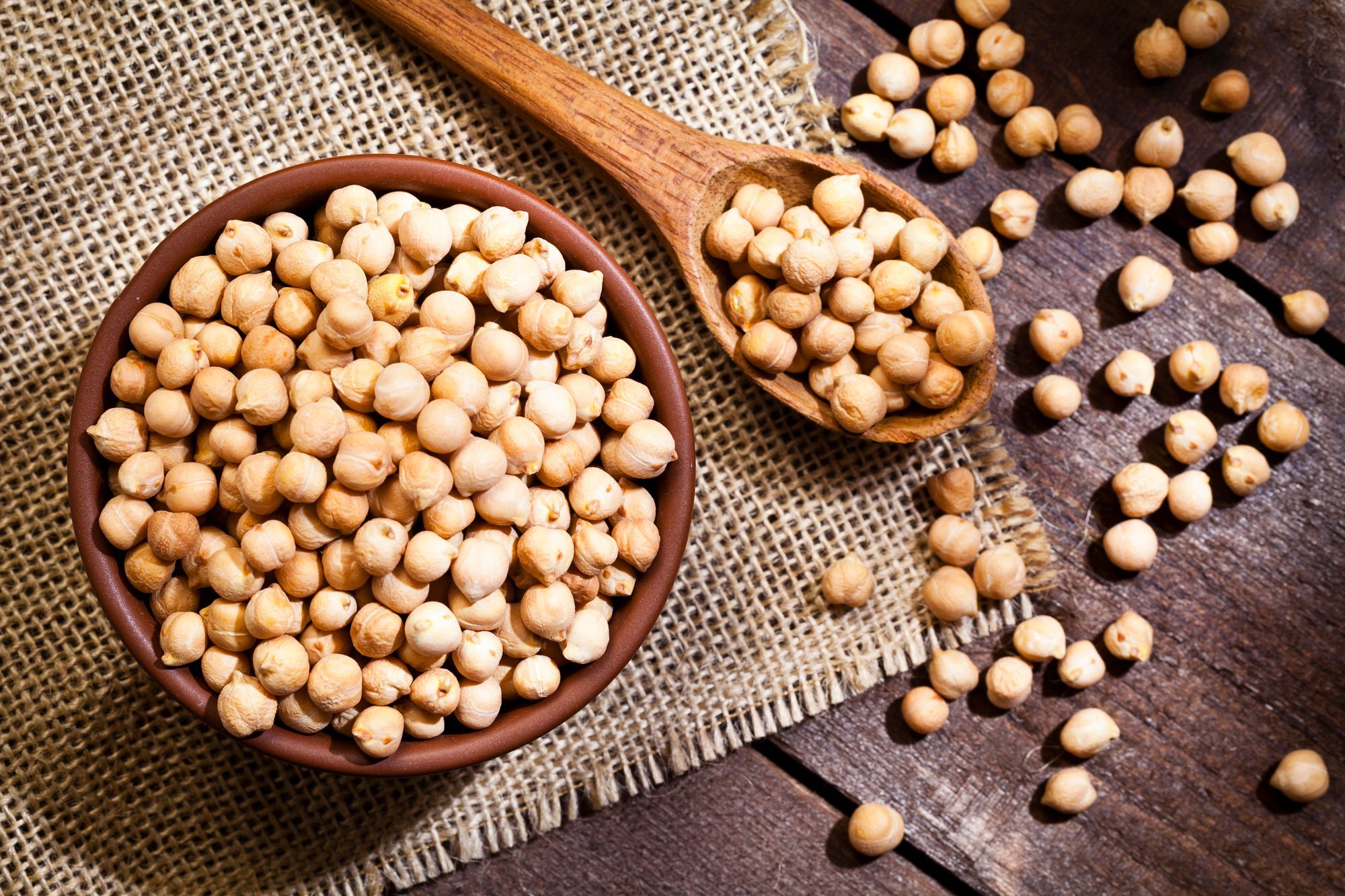
(½ cup, canned): 5.4 mg of non-heme iron
Also known as garbanzo beans, chickpeas are delicious and versatile. They’re the main ingredient in one of my favorite foods: hummus. You can easily add this iron rich food to salads, mixed into soups and pasta dishes, or roasted to make them a crispy snack.
Iron Rich Food #2 — Edamame
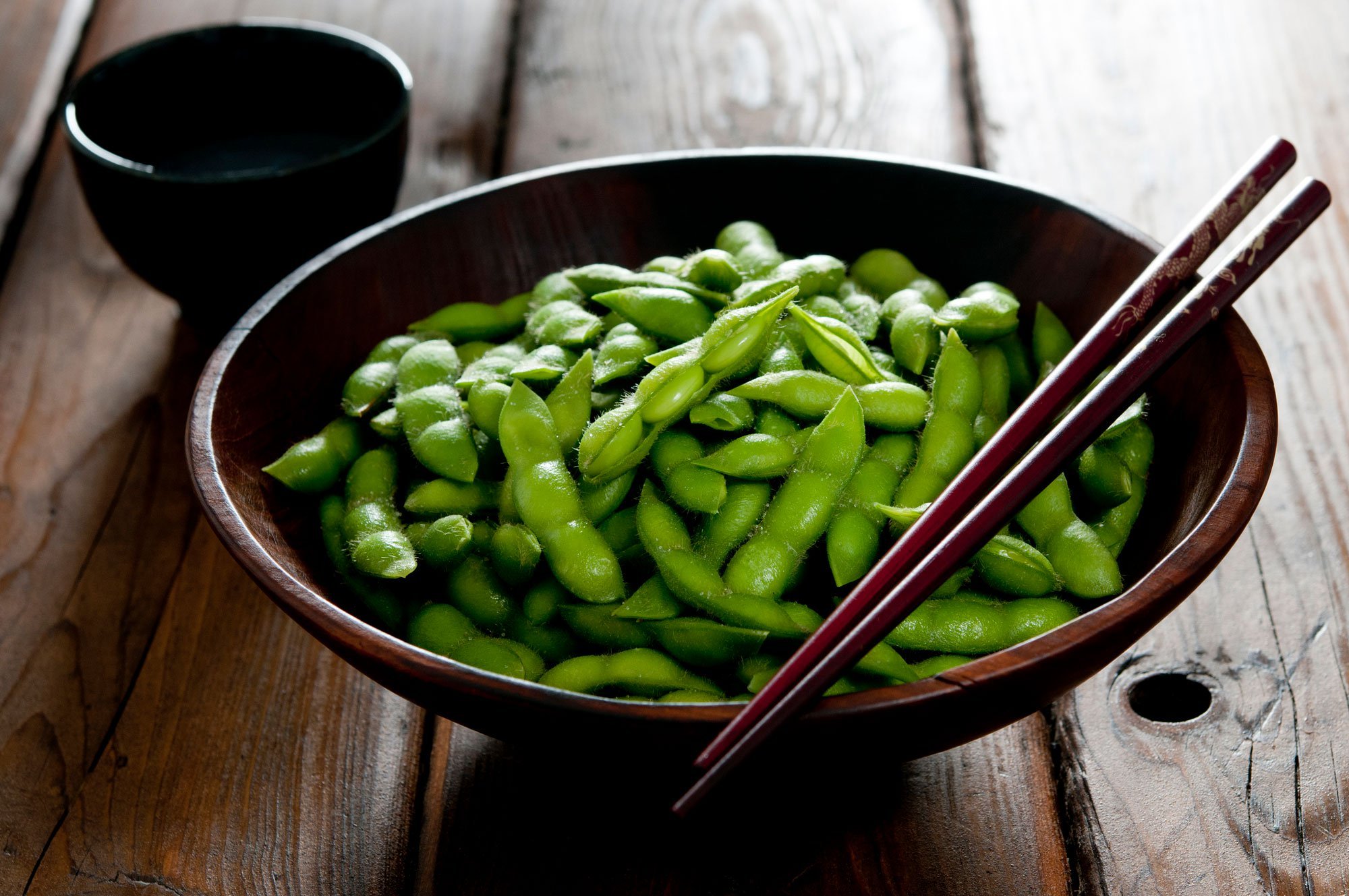
(½ cup, whole): 2 mg of non-heme iron
Edamame are immature soybeans in their green, fuzzy pods.
You can boil or steam the pods. If you’re not a fan of shelling legumes, you can also buy these pre-shelled in the frozen vegetable section of many grocery stores.
Edamame make a great addition to stir-fries and bowls, blended into edamame hummus, or can be enjoyed on its own as a high-protein, high-iron snack.
(Note: Some edamame is made from genetically engineered soybeans. If GMOs aren’t your thing, look for organic or non-GMO certification.)
Iron Rich Food #3 — Lentils
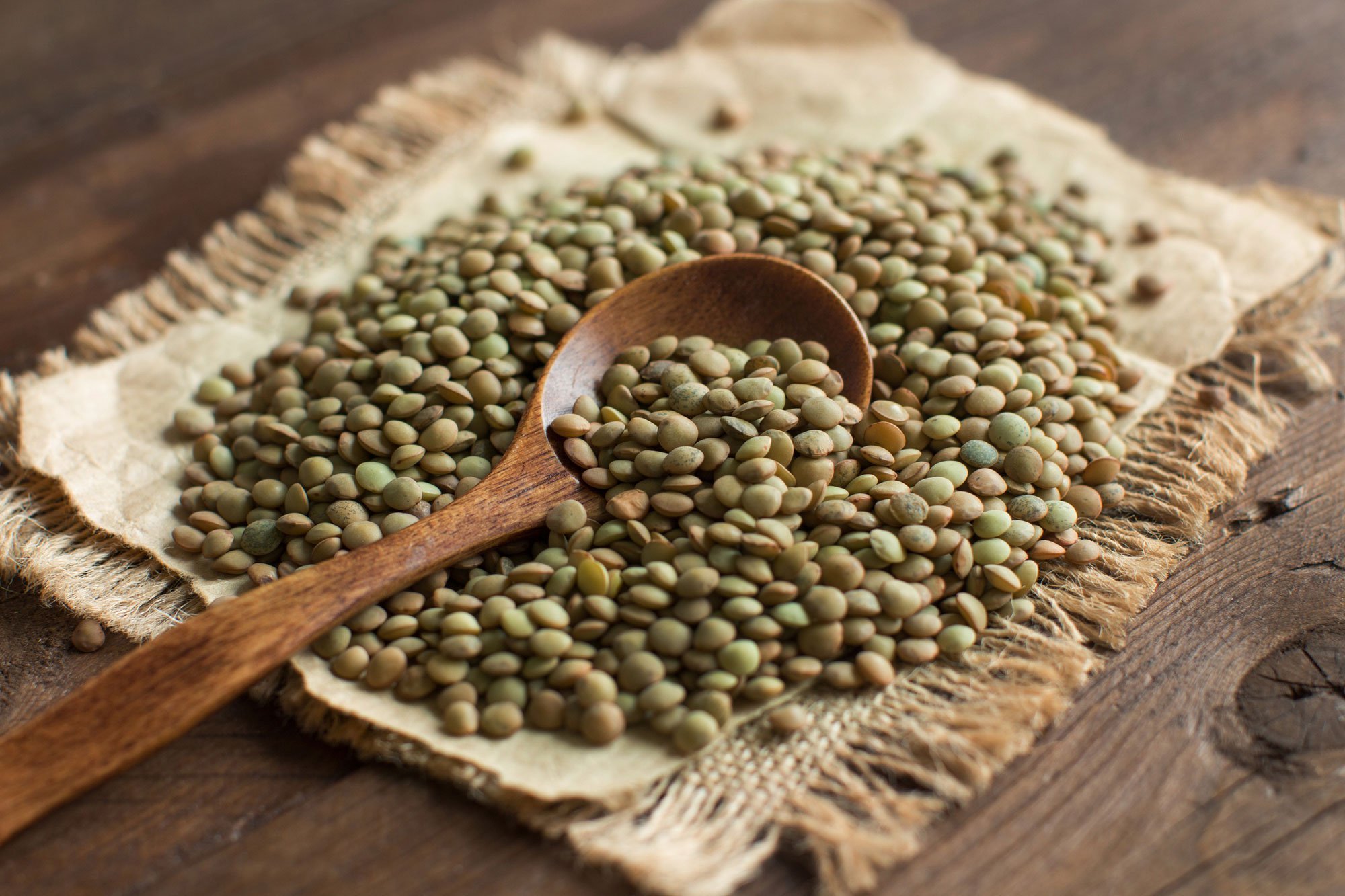
(1 cup): 7.2 mg of non-heme iron
Lentils come in several varieties, such as green, red, and brown, all of which have different best uses in cooking. Regardless of the color, though, lentils are an excellent source of iron.
You can use this iron rich food to make lentil loaf, sprinkle them into mixed greens, or make them into a cold lentil and herb salad.
Try this Indian Cauliflower Lentil Stew or these Stuffed Peppers with Lentils.
Iron Rich Food #4 — Tofu
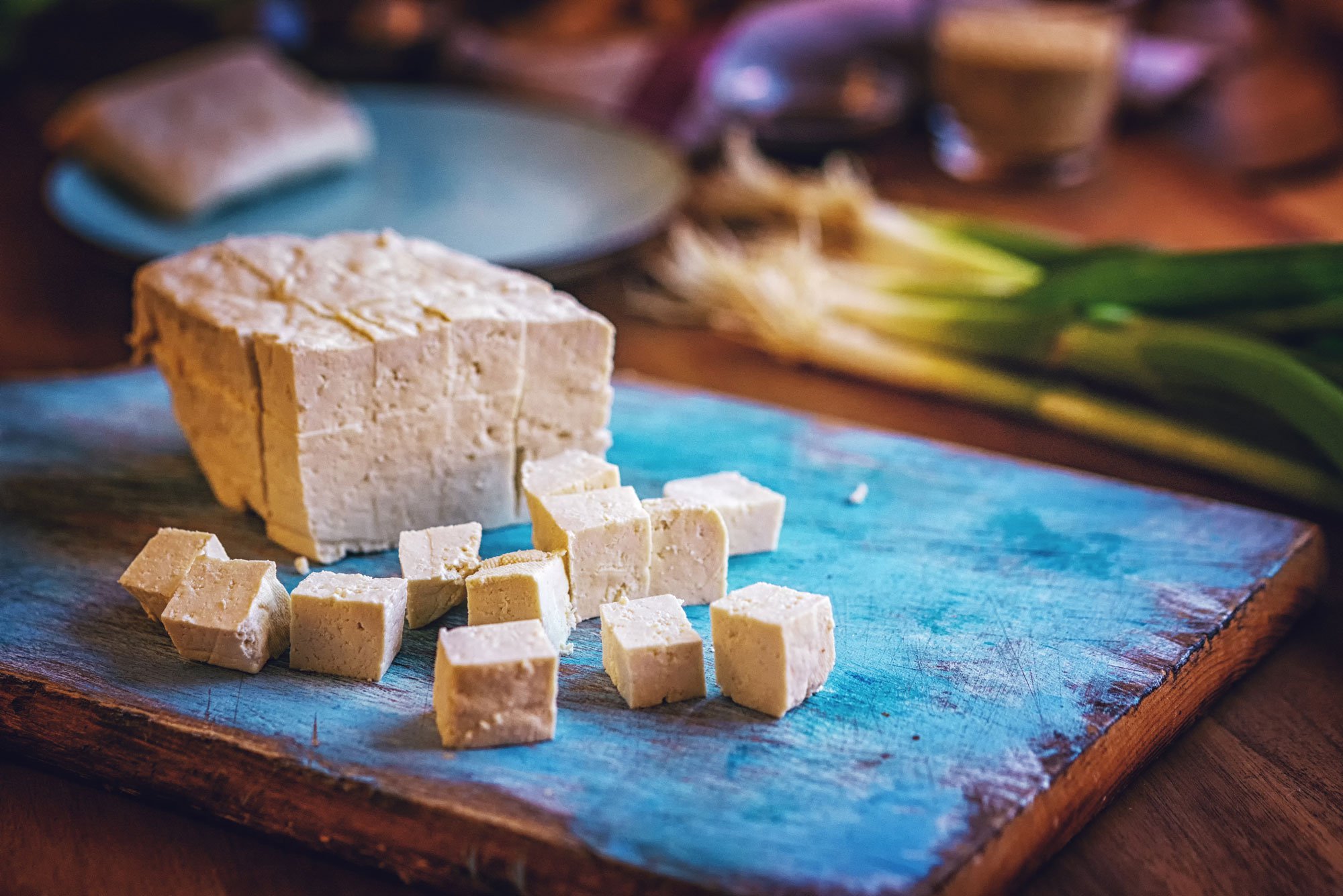
(2 oz, extra firm): 2 mg of non-heme iron
Also known as soybean curd, tofu is made by coagulating soy milk and pressing it into cubes.
Tofu can take on the flavor of almost anything. You can press and bake it, crumble it into a breakfast scramble, slice it into sandwiches, or toss it into soups and pastas. (Note: As with all soy foods, we recommend getting organic if you can to avoid genetically engineered soybeans.)
Iron Rich Food #5 — Cashews

(¼ cup): 1.5 mg of non-heme iron
Cashews make a great base for homemade dairy-free cheese and pasta sauces. You can add them to smoothies for a nutty flavor. Or you can blend them into cashew butter.
Iron Rich Food #6 — Pepitas
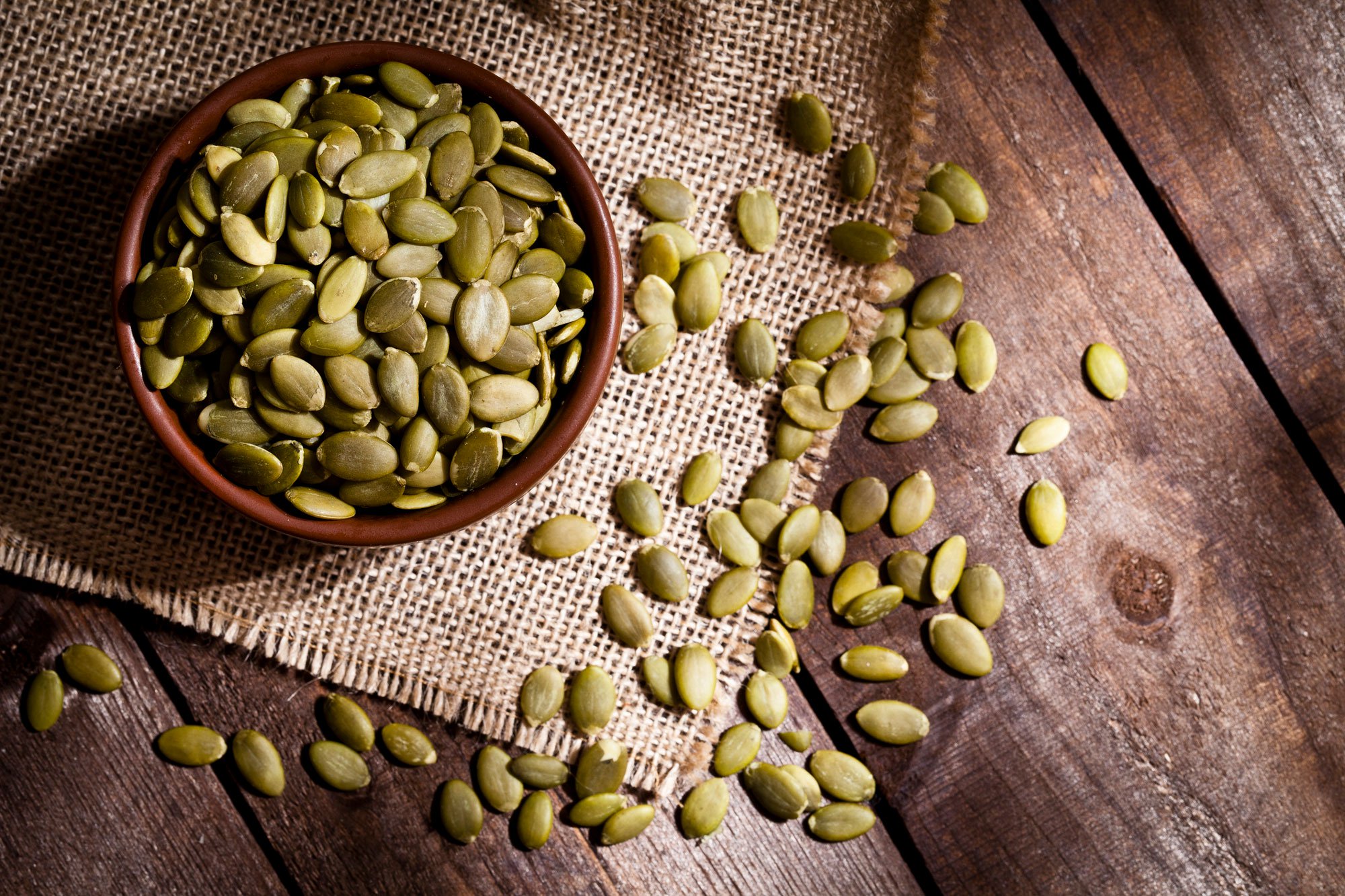
(10 seeds): 1.8 mg of non-heme iron
Pepitas are otherwise known as pumpkin seeds. Though you may be used to seeing them as flat and white, the white part is just the hull — pepitas are actually light green in color.
You can add this iron rich food to smoothies, mixed into yogurt or oatmeal, or tossed onto a salad.
Iron Rich Food #7 — Dark Leafy Greens
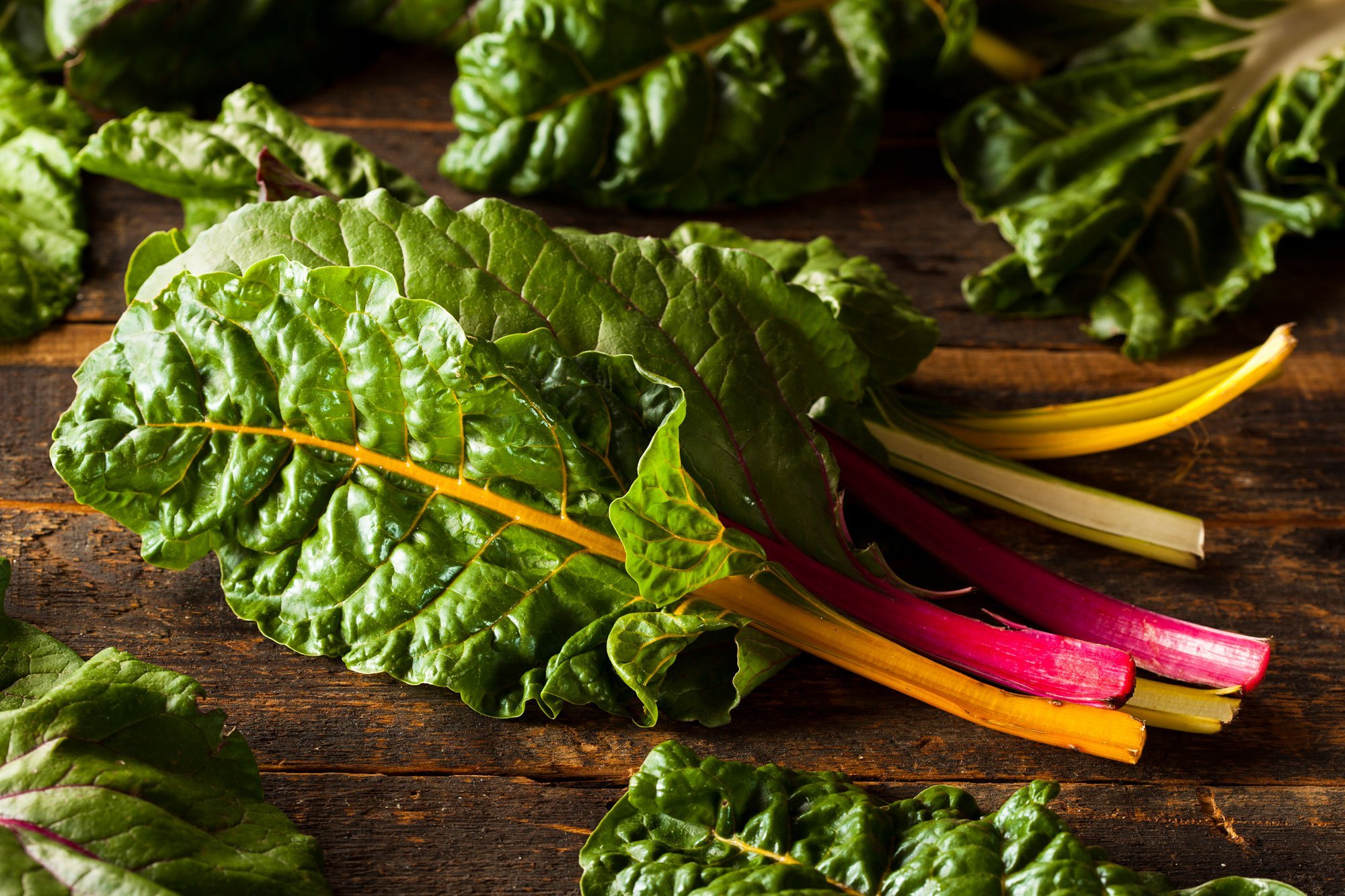
- Swiss chard = (1 cup, boiled): 4 mg of non-heme iron
- Collards = (1 cup, boiled): 2.2 mg of non-heme iron
- Kale = (1 cup, chopped): 1.1 mg of non-heme iron
Dark leafy greens contain a lot of non-heme iron. But some greens — including spinach, Swiss chard, and beet greens — also contain high amounts of compounds called oxalic acid (or oxalates), which may bind to some of the iron and prevent absorption (though some research seems to show otherwise).
Other greens, such as collards and kale, contain much lower amounts of oxalates.
Worried about oxalates in greens preventing you from getting iron? Though more research is needed, my sense is that oxalic acid does impact the absorption of iron. But dark leafy greens with high amounts of oxalates still provide iron — you just might not get all of it.
If you’re eating a variety of iron rich plant foods, you probably don’t need to worry much about oxalates.
And you can take steps to increase the amount of iron your body gets from leafy greens. Cooking your greens is one thing you can do. Boiling or steaming and discarding the water has been found to reduce the oxalates by up to 90%, depending on the vegetable.
You can also eat leafy greens with vitamin C-rich foods, such as oranges and red bell peppers, because this helps your body absorb iron (more info on the power of vitamin C to boost iron absorption below).
A Quick Note About Phytates in Plants
Chickpeas, edamame, lentils, tofu, cashews, and pepitas have phytates (which can inhibit iron absorption). But you can take steps to reduce or counteract phytate’s effects on iron. (See more below.)
How Much Iron Do You Need?
Your body is a pretty adaptable and amazing puzzle. It’s able to adjust how much iron it absorbs and uses based on how much is available.
As with other nutrients, your iron needs change over time. And they vary based on gender, age, and during different seasons of life. (See more about this below.)
Recommended Daily Allowances (RDA) are intended to meet the needs of the majority of the general population. Here’s the U.S. RDA for iron:
| Gender/Age | Iron Requirements (mg/day) |
| 1-3 years | 7 |
| 4-8 years | 10 |
| 9-13 years | 8 |
| 14-18 years, female | 15 |
| 14-18 years, male | 11 |
| 19-50 years, female | 18 |
| Pregnancy | 27 |
| Lactating | 9 |
| 19+ years, male | 8 |
| 51+ years, female | 8 |
Why Some People May Need More Iron
Barring a medical miracle, I expect that I’ll never get to be pregnant. But I still find pregnancy miraculous. Did you know that pregnant women actually have more blood than everyone else?
Having more blood means more red blood cells are needed — which is why pregnant women need more iron.
Getting enough iron is critical for growing another human. Iron deficiency during pregnancy can result in premature birth, babies born with low birth weights, postpartum depression, and even, if the deficiency is severe enough, an increased risk of death.
Iron needs increase during times of rapid growth, too. This means that infants, young children, and teenagers also need more iron as a proportion of their total caloric intake.
Menstruating women — especially pubescent girls — have higher iron needs, as well due to monthly menstrual blood loss. Women who have especially heavy menstrual periods are at heightened risk for developing an iron deficiency if their iron stores are not repleted well through their diet.
What Happens When You Get Too Little Iron?
Our bodies provide us with a clue that something’s wrong when there’s too little iron in our bloodstreams (iron deficiency anemia): You feel really tired.
Other symptoms can include difficulty maintaining normal body temperature, dizziness, headaches, and inflammation of the tongue (called glossitis).
Iron deficiency anemia occurs when there are not enough red blood cells being made to carry oxygen throughout your body.
Iron deficiency is more common among certain populations, such as those who donate blood often or who have certain chronic conditions, including cancer, gastrointestinal disorders (like Crohn’s disease, ulcerative colitis, or celiac disease), or heart disease.
What About Ferritin Levels?
Ferritin is a protein in your body that stores iron. It’s also known as your iron stores, meaning the iron your body isn’t currently using, but keeps in reserve. If your ferritin levels drop too low, you can have similar symptoms to iron deficiency anemia. However, your blood iron levels may still likely be in range when tested. This is called iron deficiency without anemia. When your ferritin gets too low, your body will begin using up the active iron in your blood. This kind of iron deficiency from low ferritin can quickly become anemia if not caught and treated properly.
According to the Mayo Clinic, normal ferritin levels in the US are defined as:
- For men, 24 to 336 micrograms per liter
- For women, 11 to 307 micrograms per liter
Why Too Much Iron May Be a Bigger Problem Today
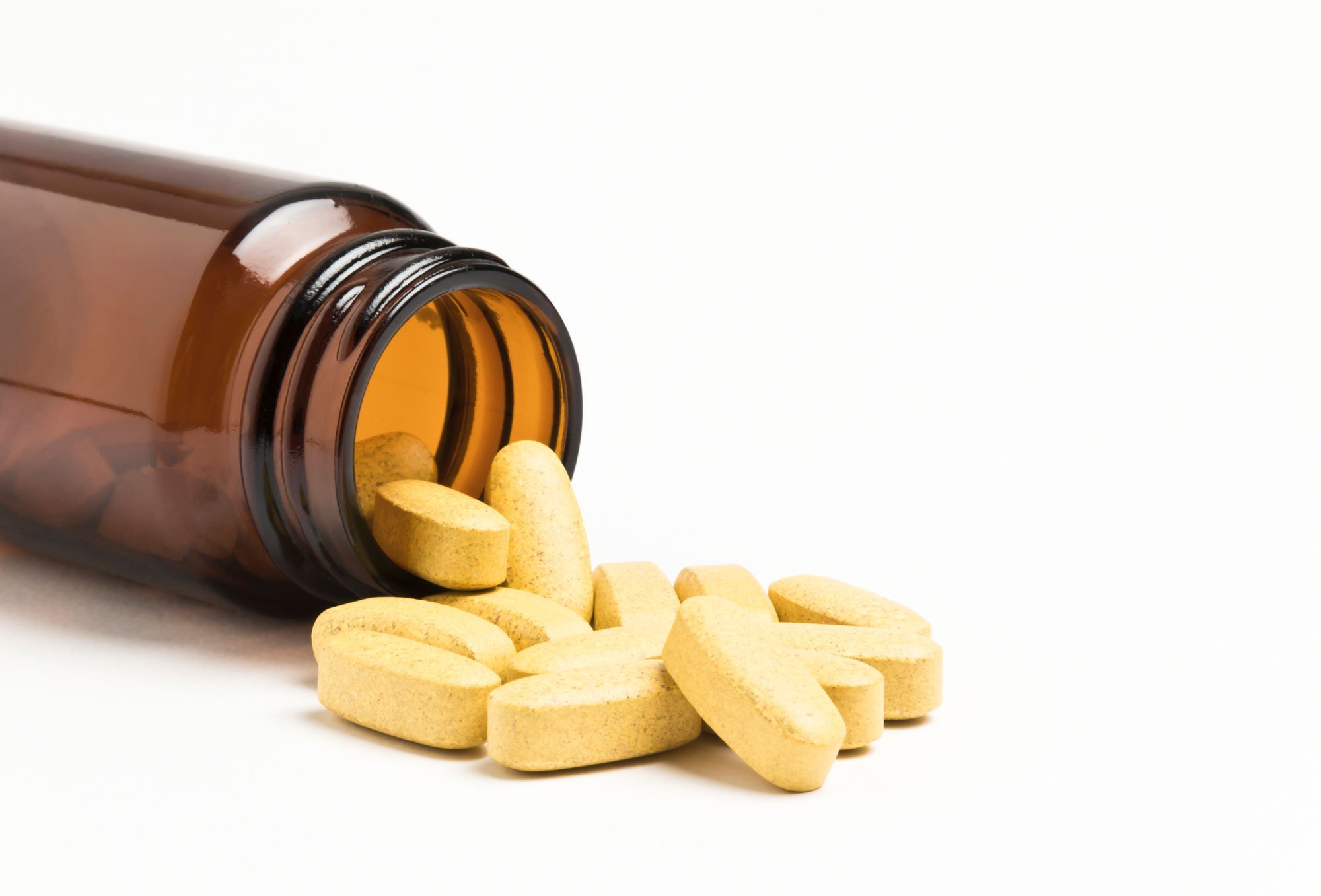
Iron deficiency has long been a concern of global public health. But in the modern world, iron overload may be even more worthy of attention.
It’s possible to have too much iron circulating in your blood, especially if the iron in your diet is heme iron. (Your body may have a hard time refusing heme iron from animal products even if you’re already getting too much.)
In a study of more than 1,000 caucasian Americans ages 67 to 96 years old who participated in the Framingham Heart Study, scientists found that 13% had high serum iron levels (associated with heart problems, fatigue, and many other health ailments), while only 3% were iron deficient.
Findings like this suggest that iron deficiency isn’t as much of a problem in developed countries as having too much iron may be.
Iron deficiency isn’t as much of a problem in developed countries as having too much iron may be.
The most common cause of iron overload — or iron poisoning — is taking too much iron in the form of dietary supplements.
Especially if you’ve been pregnant or follow a plant-based diet (or both!), you may have been told to consider an iron-containing supplement at one point or another.
But do doctors who prescribe iron supplementation to their patients monitor them to ensure that they don’t develop iron overload? Many do not.
Patients are left with unknown amounts of iron in their bodies. And sometimes, that can lead to an overdose.
What Happens When You Have Too Much Iron?
Having too much iron in your body is connected with an increased risk for certain chronic diseases, including type 2 diabetes, heart disease, and certain cancers.
In a 2004 study published in the Journal of the American Medical Association, researchers looked at 32,000 women from the Nurses’ Health Study and found that those who had the highest iron stores were three times as likely to have diabetes than women with lower stores.
Researchers similarly looked at medical and dietary trends of 38,000 men and identified risk factors associated with development of type 2 diabetes. Intake of heme iron from red meat was found to increase risk of the disease, whereas heme iron intake from non-red meat sources had no correlation.
High iron levels have also been found in the brains of people with diseases that affect the neurological system, including Alzheimer’s, Parkinson’s, and Lou Gehrig’s Disease.
Sometimes Your Own Body is the Cause of Having Too Much Iron
Excess iron can also be caused by the body itself, through a condition called hemochromatosis.
This is a genetic disorder that affects approximately one million people in the United States. And it’s more likely to affect Caucasians and people of European descent.
Normally, you absorb around eight to 10% of the iron you eat, but people with hemochromatosis can absorb four times that much.
Treatment usually consists of removing blood from the body regularly to keep iron stores at a safe level. If left untreated, the high levels of iron circulating in your blood due to hemochromatosis can damage your organs and even lead to premature death.
Factors That Influence Your Body’s Ability to Absorb Iron
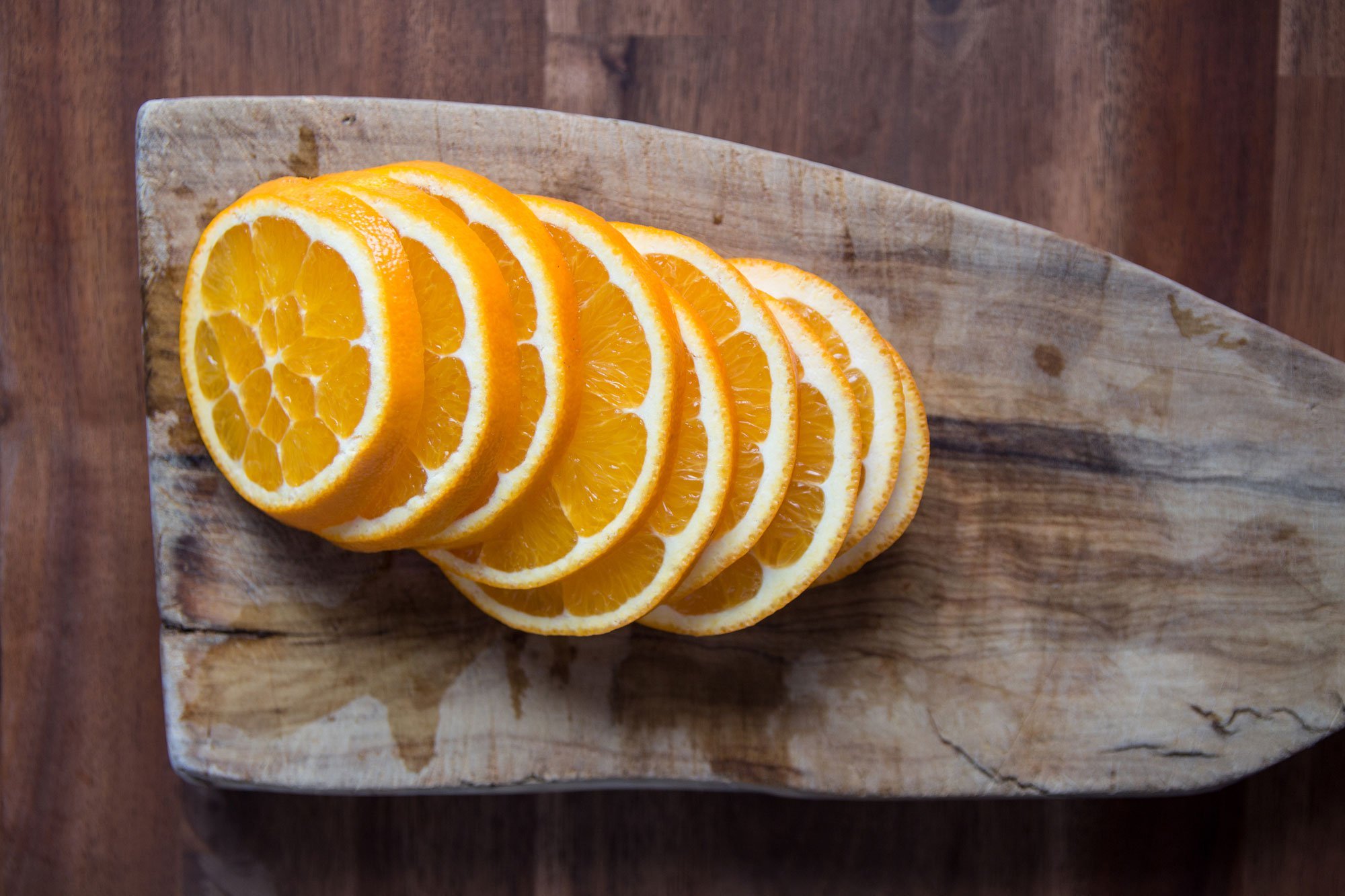
What if you’re eating plenty of iron rich foods, but you’re still iron deficient at your check-up?
There could be a few reasons. The most common culprits are digestive conditions that prevent adequate iron absorption, like inflammatory bowel disease or celiac disease.
Many people in this situation focus on iron intake by adding heme iron from red meat, or iron supplements, without monitoring iron levels.
The danger of this approach is that it can easily swing the pendulum the other way, and your body can wind up with too much. (Eating red meat is also associated with higher risks of heart disease, cancer, and many other ailments.)
A wiser course might be to make dietary changes that focus on increasing iron absorption.
You see, the foods you eat not only influence how much iron goes into your body but also how much iron you absorb.
4 Ways to Increase Your Body’s Ability to Absorb Iron
Certain foods, beverages, and medications can boost iron absorption, while others can reduce it. And some small changes can make a world of difference in your iron levels.
1) Vitamin C
Vitamin C helps your body absorb iron.
Consuming 25 to 100 mg of vitamin C has been shown to increase absorption of nonheme iron by four times.
An easy way to capitalize on this relationship is by incorporating vitamin C-rich foods into meals that contain abundant iron.
For instance, pairing orange slices alongside spaghetti with tomato sauce, or adding steamed broccoli alongside a lentil dish. One medium orange has around 70 mg of vitamin C. And one cup of broccoli has about 80 mg of vitamin C.
2) Vitamin A and Beta-Carotene
Studies have shown that adding vitamin A-rich foods to grain-based meals increases non-heme iron absorption.
Foods high in vitamin A include carrots, sweet potatoes, dark leafy greens, winter squash, and broccoli.
In a 1998 study published in the Journal of Nutrition, researchers found that the iron absorption of 100 people was increased significantly when vitamin A-rich foods were added to meals based on cereals. Iron absorption increased by up to 200% for rice, 80% for wheat, and 140% for corn.
3) Cast-Iron Cookware
Some people prepare food with cast-iron cookware to add a little extra iron into their diet. The problem is there’s no way to know exactly how much iron is added by cooking with this type of cookware — and it can vary.
The more acidic the food that is being cooked, the more iron will likely leach from the pan into your food.
If cast iron cooking is your thing, and your iron levels are low, great!
But if you’re not a fan of lugging around heavy skillets or your blood iron levels are normal, cast iron may not be such a good idea.
4) Allium Vegetables
The allium family of vegetables has been found to help promote the bioavailability of iron (and zinc, too).
So you can eat iron rich foods with alliums (garlic, onions, chives, shallots, scallions, leeks) to boost the amount of iron your body absorbs.
3 Things That Block Your Body’s Absorption of Iron
1) Phytates
Plant-based diets often provide compounds called phytates, which can inhibit iron absorption. Phytates are abundant in legumes, grains, soy, nuts, and seeds. But the phytate content of foods varies widely.
In a 2000 study published in the journal Critical Reviews in Food Science and Nutrition, researchers observed that only up to 18% of iron was absorbed in meals that contained 250 mg of phytates. They also saw that iron absorption was inhibited by phytate intake of as little as 2 mg.
However, phytates seem to actually be good for us. They have been shown to have a wide range of health-promoting properties, including anti-cancer activity.
But if you want to reduce the amount of phytate content in your foods, soaking has been found to do just that.
2) Calcium
Calcium can also reduce iron absorption.
This has been observed with both the use of calcium supplements and calcium from dairy products.
Some research has found that iron absorption is reduced by 50 to 60% when a person ingests 165 mg of calcium from dairy products.
For reference, one-quarter cup of mozzarella cheese contains 198 mg of calcium. To prevent this interaction, you may want to avoid eating dairy products — with meals from which you’re planning to get your iron.
3) Coffee and Tea
Compounds in tea called tannins reduce absorption of iron.
Coffee and tea both contain polyphenols — compounds that also slow iron absorption.
But it turns out that for many people, the iron absorption slow-down polyphenols cause might actually be a good thing.
One study showed that the inhibitory effect of polyphenols on iron absorption actually reduced cancer risk. The theory is that iron is a required nutrient for tumor formation, and so polyphenols serve the function of preventing an excess of iron stores.
The Truth About Iron Isn’t What Many People Think
Contrary to popular belief, getting enough iron usually isn’t a problem.
This essential mineral is naturally present in many foods (plus there are plenty of iron rich foods). And in reality, more people are probably suffering from getting too much iron than are suffering from getting too little.
Plus the type of iron you eat matters, too. Heme iron (from animal products) has higher bioavailability, but it can be too readily absorbed. With nonheme iron (from plants), your body is better able to regulate absorption based on how much you actually need.
And as for pumping iron, well, carry on.
Tell us in the comments below:
- How do you get your iron? And what iron rich foods do you regularly eat?
- Have you ever experienced iron deficiency?
- Have you ever experienced iron overload?



